According to popular science China news, the blood vessels are hidden in our bodies and are a closed system of pipes in which the rushing blood flows.
Even if it is blocked, it cannot be seen or touched, but it will plant an “indefinite time bomb”, and the consequences may be very serious, such as causing cerebral infarction, myocardial infarction, and even death.
So, how to judge the quality of blood vessels? Can you tell if a blood vessel is blocked by touching the back of your foot? What other ways can we judge?
Let’s learn together today.
Can you tell if the blood vessels are good by touching the instep?
There is some truth to this.
The temperature of the skin on the instep and the pulsation of the instep arteries can not only reflect the health of the blood vessels in the lower extremities, but also indicate the health of the blood vessels in the heart, brain, aorta and other parts to a certain extent.
Due to the typical symptoms of lower extremity vascular disease, once lower extremity vascular disease occurs, it is likely that corresponding lesions have also appeared in other parts.
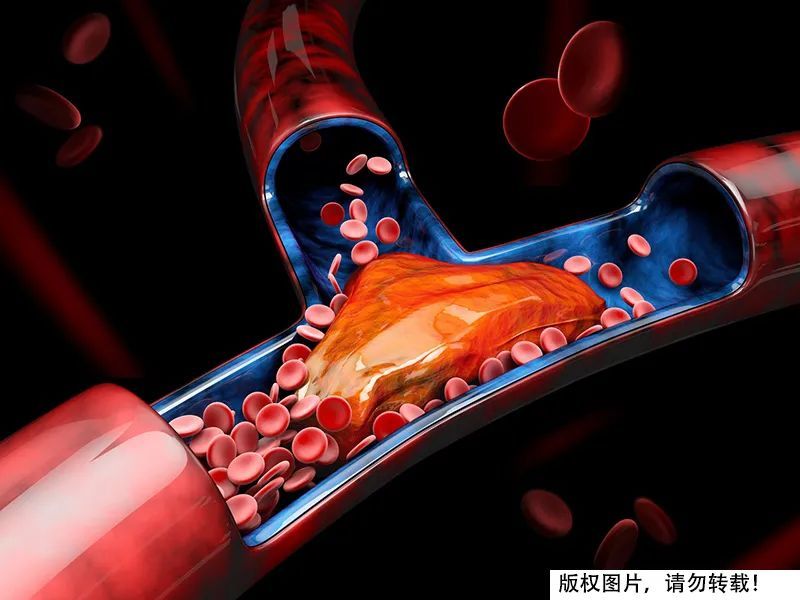
Gallery copyright pictures, do not authorize reprint
If both the femoral and calf arteries are normal, then their branching dorsal pedis artery is usually normal, and the dorsal pedis artery can be palpated. On the other hand, if the dorsal foot artery cannot feel the pulse, it means that there is a problem with the blood supply of its superior.
If the upper-level blood vessel is blocked, the blood supply to the lower-level branch and its branches will be reduced… The dorsal foot artery is located in the most superficial part of the body – the instep, with a large exposed area and the easiest to use with hands touch.
Therefore, whether the blood vessels are good or not can be preliminarily judged by touching the instep. The dorsal foot artery is located at the highest point in the middle of the back of the foot.
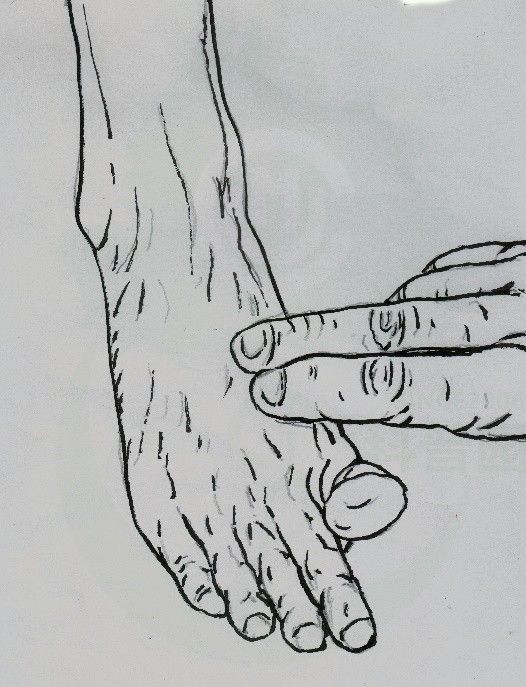
Image source: Image courtesy of the author
What are the symptoms of blocked blood vessels in the lower extremities?
The arteries of the lower extremities are the “arteries” that connect the heart to the feet. The conduits for blood to flow to the lower extremity arteries through the thoracic aorta, abdominal aorta, and iliac arteries mainly include the femoral artery (femoral artery, popliteal artery), calf artery (anterior tibial artery and posterior tibial artery), and finally reach the foot artery to supply nutrients to the feet.
Arterial disease of the lower extremities may not have any symptoms in the early stage, and most people are found at a relatively late stage. If “legs and feet are cold, and legs hurt when walking”, don’t always think that it is “rheumatism, suffering from cold” or “old cold legs, arthritis”, it is likely that the blood vessels in the legs are blocked.
Early symptoms: numbness, chills, chills, fatigue, weakness, muscle aches and symptoms;
Typical symptoms: Pain in the calf muscle group is the most common, intermittent claudication, and the typical repetitive pattern of “walking-pain-rest-relief”.
How to self-test whether the blood vessels in the lower extremities are blocked?
Touch pulse: The pulse of the dorsum of the foot (the highest point in the middle of the dorsum of the foot) is very weak or difficult to feel; after walking and resting, the pulse of the dorsum of the foot cannot be felt, and the blood vessels of the lower extremities may be narrowed.
Look at the color: After lying flat with legs raised (45 degrees) for 1 minute, the skin color of the legs is inconsistent; after sitting with the legs down, if more than 30 seconds, ischemia may have occurred.
Touch the heat: touch the skin of your legs (thigh and calf) to see if the heat is consistent. If it is inconsistent, the blood vessel of the leg with poor heat may be blocked.
The carotid artery is the most feared blood vessel in the human body?
The carotid artery is a very important part of the blood vessels in the whole body. It is a “traffic artery” connecting the heart and the brain. To pump blood from the heart to the brain, it needs to pass through the carotid artery.
If the carotid artery has plaque and is blocked, with the impact of arterial blood flow, the plaque falls off into the brain, the cerebral blood vessels will be blocked, and the brain tissue will be in a state of ischemia and hypoxia. It can cause dizziness and even cerebral infarction, and a stroke will happen!
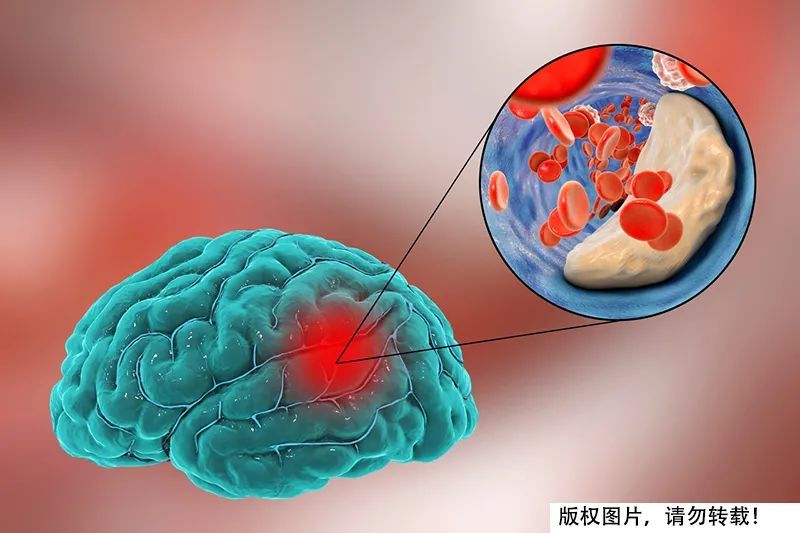
Gallery copyright pictures, do not authorize reprint
Therefore, from the perspective of “traffic arteries”, the carotid artery is the blood vessel that the human body is most afraid of being blocked. 70-80% of the blood supply to the brain is done by the carotid arteries. For the brain to be healthy, carotid artery patency is the most important.
Research shows that 20% of the 2.5 million new strokes in my country each year are caused by carotid plaque, which is an important cause of cerebral infarction.
In addition to touching the instep, where else can I “touch” the blockage?
Figure 1. Left-sided near the umbilicus, palpation with both hands (aortic pulse);
Figure 2. Palpation at the midpoint of the inguinal fold (common femoral artery);
Fig. 3. The patient’s knee is slightly flexed and relaxed, the examiner’s thumb is placed on the tibial shaft, and the index and middle fingers of both hands are pressed deeply into the popliteal fossa (popliteal artery);
Figure 4. Dorsiflex the patient’s big toe upward, and touch the outside of the extensor pollicis longus tendon (dorsal artery) with the index and middle fingers;
Figure 5. Touch the posterior part of the medial malleolus (posterior tibial artery);
Knock on the blackboard: find the exact location, feel the artery; make an accurate judgment, go to the hospital!
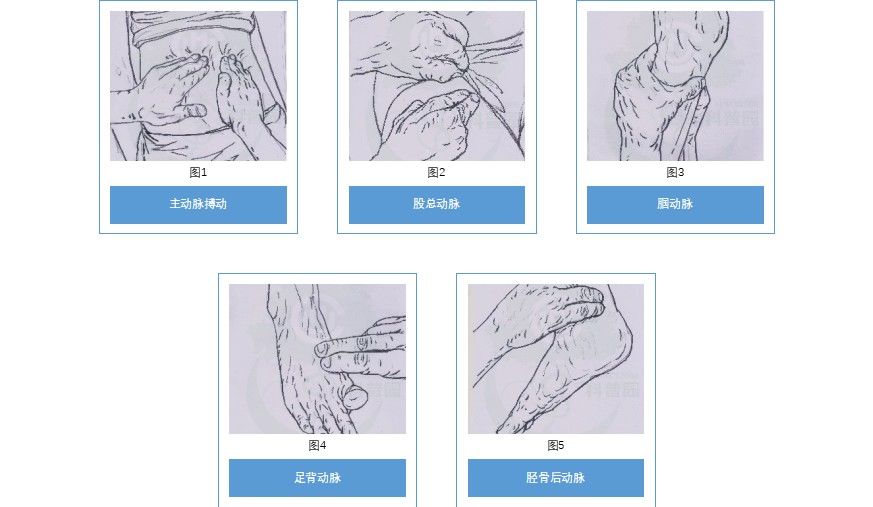
Image source: Image courtesy of the author
Different symptoms correspond to different traffic jams
Life is endless and galloping, how to walk the “100,000 kilometers” of blood vessels? All blood vessels lead to the heart!
Which “traffic road” is blocked, the organs it supplies blood will be ischemia! Which symptoms appear corresponds to which “traffic road” is blocked, can you judge?
Head bloating, drowsiness, slurred speech, numbness of limbs, and unsteady walking indicate possible blockage of cerebral blood vessels;
Sudden chest tightness and difficulty breathing, suggesting possible pulmonary embolism, which can lead to sudden death in severe cases;
Chest pain and angina pectoris may indicate possible coronary artery blockage, myocardial infarction or even sudden cardiac death.
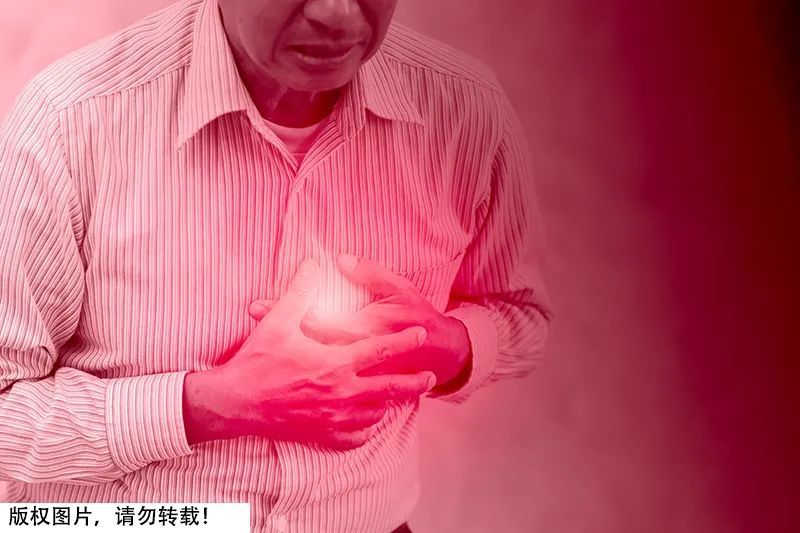
Gallery copyright pictures, do not authorize reprint
What areCan action relieve blood vessel blockages?
In addition to a healthy diet, exercise can relieve blood vessel blockages, take brisk walks, stretch your arms and move your legs more often.
In addition, Taijiquan, aerobics, square dancing, etc. are all suitable for you; any exercise must be adhered to in order to effectively prevent diseases.